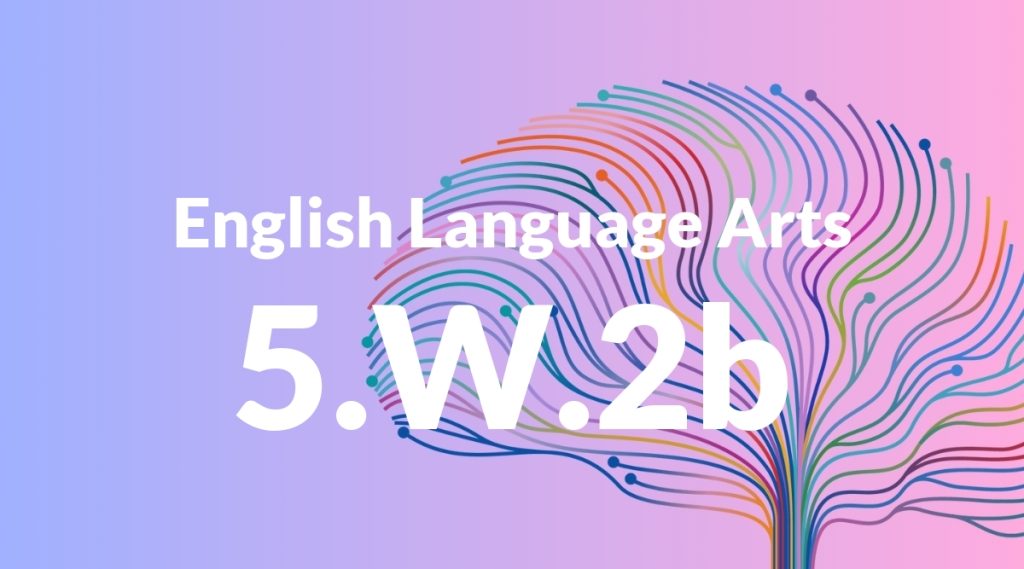Standard: 5.W.2b – Develop the topic with facts, definitions, concrete details, quotations, or other information and examples related to the topic.
Grade level: Grade 5
Subject: English Language Arts
Domain: Writing
Teacher Overview
This standard focuses on developing students’ ability to enhance their writing by incorporating various types of information, such as facts, definitions, and quotations. Mastery of this skill is crucial as it allows students to create detailed, informative, and credible pieces of writing, which is essential for success in higher grades and real-world communication. Students should already know how to gather information from different sources and organize their thoughts into coherent paragraphs. They should also understand the importance of supporting their main ideas with relevant details.
Upon mastering this standard, students will be equipped to produce well-developed and informative writing pieces. They will be able to critically evaluate and synthesize information from multiple sources, a skill that is essential for academic success and effective communication.
Common Misconception 1
A common misconception is that students may think they only need to use one type of information to develop their topic, such as only using facts. This is incorrect because relying on a single type of information can make their writing one-dimensional and less engaging.
Intervention 1
An effective intervention is to provide students with examples of well-rounded writing that incorporates various types of information. Encourage them to practice blending facts, definitions, quotes, and examples in their own writing.
Common Misconception 2
Another misconception is that students might believe adding more information always improves their writing, regardless of its relevance. This can lead to cluttered and unfocused writing.
Intervention 2
To address this, teach students how to critically evaluate the relevance of the information they include. Use exercises that focus on selecting and integrating only the most pertinent details that support the main topic.
Prerequisite Knowledge
Students should have a basic understanding of how to gather and organize information, know how to identify reliable sources, and have experience writing simple paragraphs with a clear main idea and supporting details.
Subsequent Knowledge
After mastering this standard, students will be able to write more complex and detailed essays, reports, and research papers. They will also be able to critically evaluate sources and integrate multiple types of information into their writing.
Instructional Activities
- Have students create a research project on a chosen topic, incorporating facts, definitions, quotes, and examples.
- Conduct a writing workshop where students practice adding different types of information to their drafts.
- Use graphic organizers to help students plan and organize their information before writing.
- Assign a biography project where students must include quotes and facts about the person they are writing about.
- Facilitate peer review sessions where students provide feedback on the variety and relevance of information in each other’s writing.




